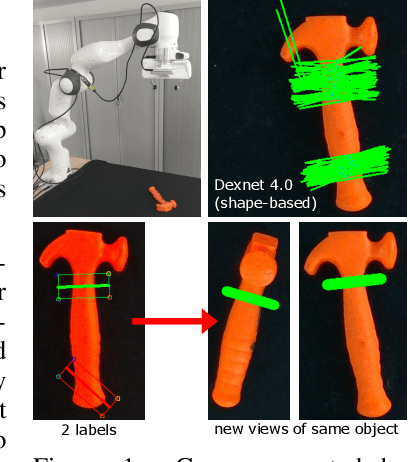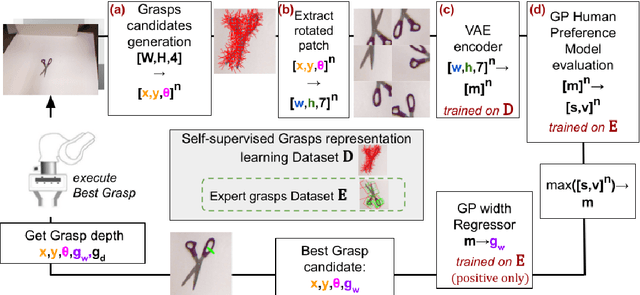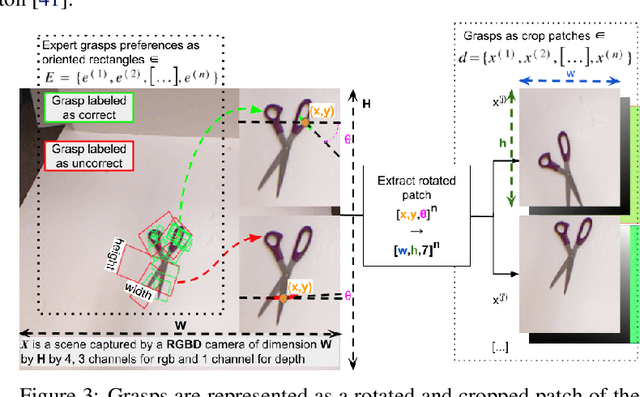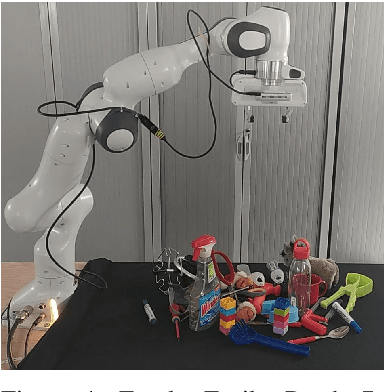Data-efficient learning of object-centric grasp preferences
Paper and Code
Mar 01, 2022



Grasping made impressive progress during the last few years thanks to deep learning. However, there are many objects for which it is not possible to choose a grasp by only looking at an RGB-D image, might it be for physical reasons (e.g., a hammer with uneven mass distribution) or task constraints (e.g., food that should not be spoiled). In such situations, the preferences of experts need to be taken into account. In this paper, we introduce a data-efficient grasping pipeline (Latent Space GP Selector -- LGPS) that learns grasp preferences with only a few labels per object (typically 1 to 4) and generalizes to new views of this object. Our pipeline is based on learning a latent space of grasps with a dataset generated with any state-of-the-art grasp generator (e.g., Dex-Net). This latent space is then used as a low-dimensional input for a Gaussian process classifier that selects the preferred grasp among those proposed by the generator. The results show that our method outperforms both GR-ConvNet and GG-CNN (two state-of-the-art methods that are also based on labeled grasps) on the Cornell dataset, especially when only a few labels are used: only 80 labels are enough to correctly choose 80% of the grasps (885 scenes, 244 objects). Results are similar on our dataset (91 scenes, 28 objects).
 Add to Chrome
Add to Chrome Add to Firefox
Add to Firefox Add to Edge
Add to Edge